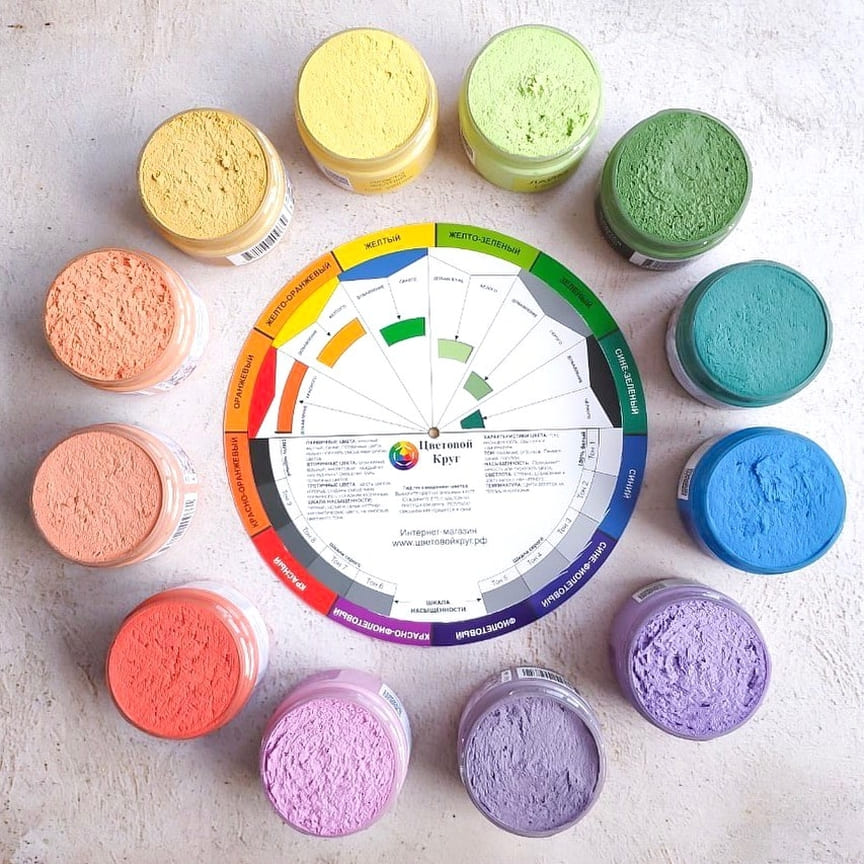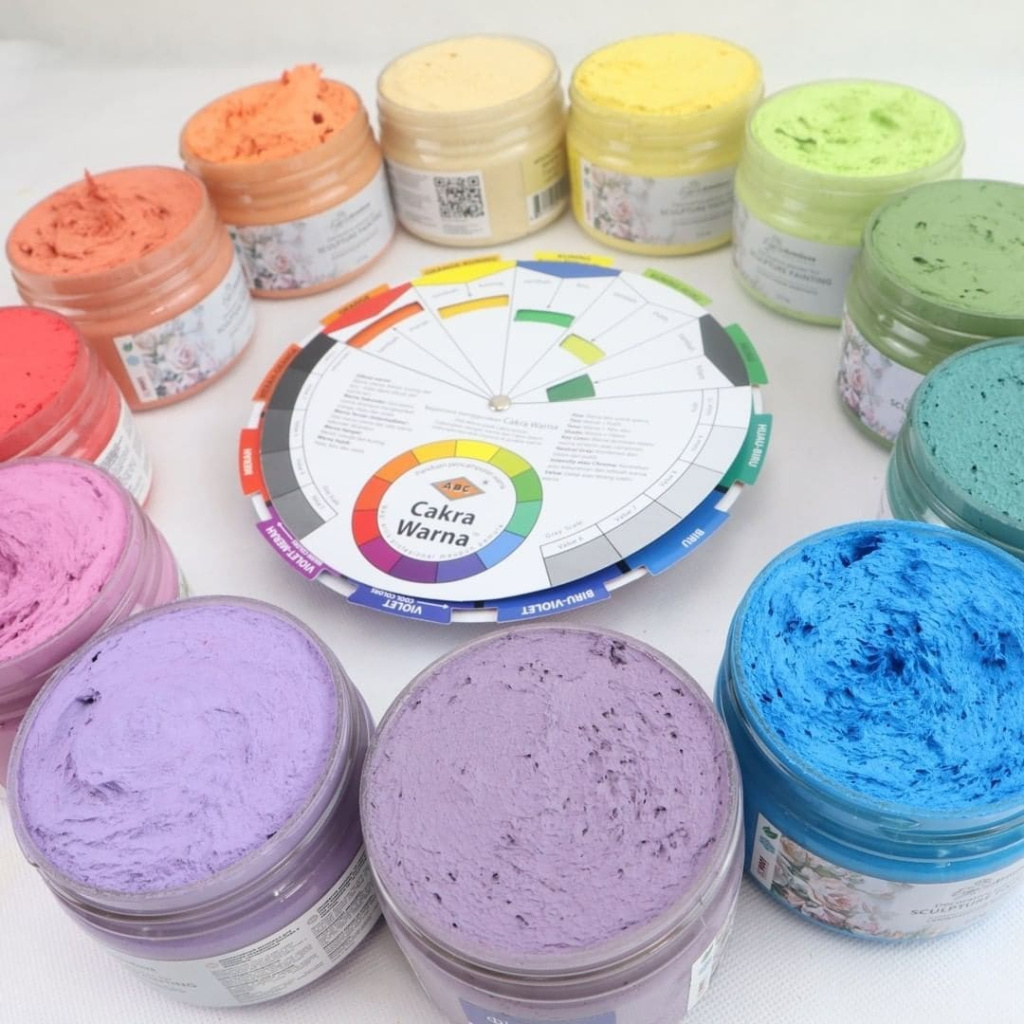Articles about sculpture painting

A brief history of the color wheel and why it is needed
By definition, a color circle is a convenient way to represent the colors of the visible spectrum in a conditional circle shape.
From history
The first color circle was described by Isaac Newton at the end of the 17th century.
Newton was the first to investigate the properties of color and found that white color breaks down into seven components. Newton described the model of the color circle by dividing the circle into 7 parts: red, orange, yellow, green, blue, indigo and purple. The colors of the rainbow.
After that, many more scientists, philosophers and artists invented color schemes, circles and even spheres with different numbers of sectors.
For example, the color circle of the German poet and philosopher Goethe contained 6 sectors and consisted of "pure" and "mixed" colors. Goethe called the "pure" or basic colors that cannot be obtained by mixing: red, yellow, blue. And the author called the "mixed" ones: orange, green, purple, which are obtained from the paired mixing of the main three.
At the beginning of the 20th century, the German scientist Ostwald created his own color circle of 24 colors. Ostwald was not an artist, but built his color circle on the basis of scientific research on the physiology of color perception through human eyes.
According to open sources, the first 12-color circle was created back in 1708 by the artist Claude Bout on the basis of Newton's theory. But the name of a completely different person received the most fame.
The Swiss artist Johannes Itten, relying on the experience of his predecessors among physicists, chemists, psychologists and artists, built his theory about color at the beginning of the 20th century. Itten wrote the book "The Art of Color" and taught the technique he developed to artists. In the book, the artist writes about the ability of color to awaken certain feelings in the viewer, analyzes the patterns of color contrasts and color harmony. His color circle of 12 sectors and the methodology served as the basis for further development of the rules of color theory.
Why do sculptural artists need a color circle?
The color wheel is a handy tool that makes it easier to understand the rules of color theory. You can find pictures on the Internet and save an electronic version. Even the electronic version of the Itten color wheel is useful for analyzing the rules of color theory. And the rules of color theory help us to choose harmonious combinations for paintings. In more detail and with examples of the rules of color theory based on the color circle, we will analyze in the Sculptural Painting Club.
From history
The first color circle was described by Isaac Newton at the end of the 17th century.
Newton was the first to investigate the properties of color and found that white color breaks down into seven components. Newton described the model of the color circle by dividing the circle into 7 parts: red, orange, yellow, green, blue, indigo and purple. The colors of the rainbow.
After that, many more scientists, philosophers and artists invented color schemes, circles and even spheres with different numbers of sectors.
For example, the color circle of the German poet and philosopher Goethe contained 6 sectors and consisted of "pure" and "mixed" colors. Goethe called the "pure" or basic colors that cannot be obtained by mixing: red, yellow, blue. And the author called the "mixed" ones: orange, green, purple, which are obtained from the paired mixing of the main three.
At the beginning of the 20th century, the German scientist Ostwald created his own color circle of 24 colors. Ostwald was not an artist, but built his color circle on the basis of scientific research on the physiology of color perception through human eyes.
According to open sources, the first 12-color circle was created back in 1708 by the artist Claude Bout on the basis of Newton's theory. But the name of a completely different person received the most fame.
The Swiss artist Johannes Itten, relying on the experience of his predecessors among physicists, chemists, psychologists and artists, built his theory about color at the beginning of the 20th century. Itten wrote the book "The Art of Color" and taught the technique he developed to artists. In the book, the artist writes about the ability of color to awaken certain feelings in the viewer, analyzes the patterns of color contrasts and color harmony. His color circle of 12 sectors and the methodology served as the basis for further development of the rules of color theory.


The authors of the photo are certified sculptural painting teachers @tatiana.doroshenko_art and @nuraini_nissa
Why do sculptural artists need a color circle?
The color wheel is a handy tool that makes it easier to understand the rules of color theory. You can find pictures on the Internet and save an electronic version. Even the electronic version of the Itten color wheel is useful for analyzing the rules of color theory. And the rules of color theory help us to choose harmonious combinations for paintings. In more detail and with examples of the rules of color theory based on the color circle, we will analyze in the Sculptural Painting Club.
09.17.2022

